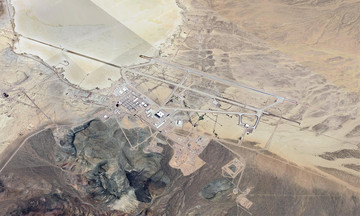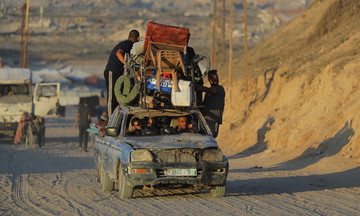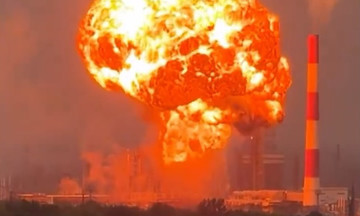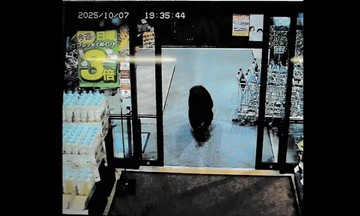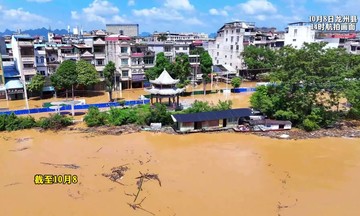On 14/9, the Israel Defense Forces (IDF) bombed the Al-Kawthar apartment tower in western Gaza City, the largest city in the Gaza Strip. Witnesses reported that Israeli fighter jets struck the building shortly after the IDF issued an immediate evacuation order for residents of the building and surrounding areas.
This is the latest in a series of IDF attacks on high-rise buildings in Gaza City as they intensify their campaign to occupy the city. According to the Gaza Government Media Office, since 11/8, the IDF has completely destroyed 1,600 high-rise buildings and apartment complexes in Gaza City.
On 5/9, the IDF declared the Mushtaha Tower in western Gaza City to be "Hamas infrastructure" and urged residents to evacuate immediately. They launched a warning airstrike before delivering the decisive blow, causing the 12-story building to collapse completely in seconds. The Israeli defense minister declared that the IDF "has opened the gates of hell in Gaza".
Israeli Prime Minister Benjamin Netanyahu warned on 8/9 that this was only a "prelude" to the IDF's efforts to force Gaza City residents to abandon their homes. "I say to the residents of Gaza: leave now!", Netanyahu said.
Hani Mahmoud, an Al Jazeera reporter in Gaza City, said Israeli fighter jets bomb an apartment building or public facility "every 10-15 minutes", often not giving residents enough time to evacuate to safety, causing many casualties. On 13/9 alone, at least 62 people in Gaza City were killed in such attacks.
This has forced the more than 700,000 Palestinians remaining in Gaza City to make a life-or-death choice: evacuate to find new shelter or stay in the besieged city. The decision is complex, dependent on family responsibilities, physical and financial conditions, and above all, luck.
"First, we think about what we have to leave behind. Our homes, streets, neighbors, and close friends," said Ihab Rabie, 45, who left northern Gaza for Gaza City at the start of the conflict. "Then come the more practical questions, like the cost, the method of evacuation, and where to go to start over. Will there be drinking water or basic necessities?".
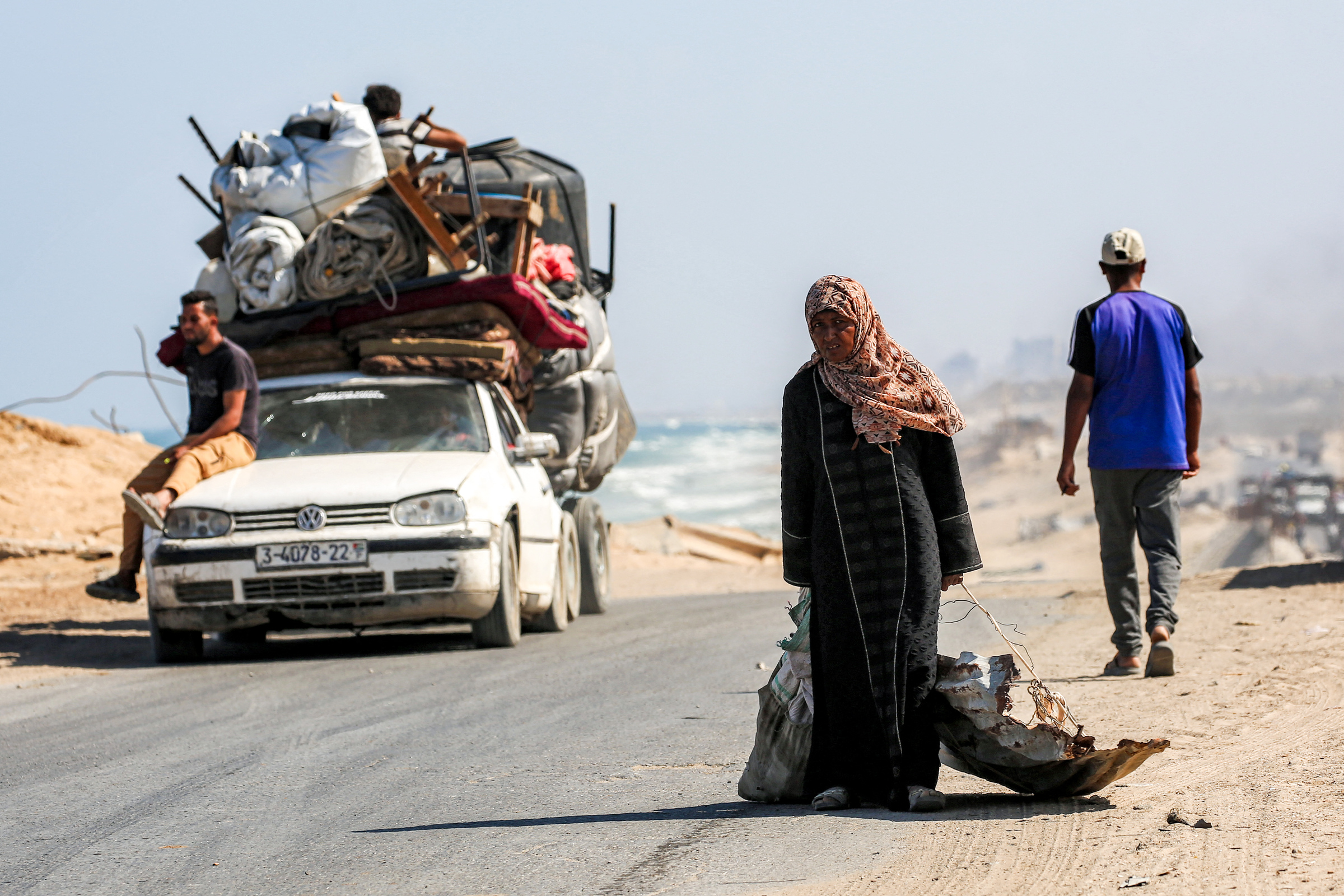 |
People on the evacuation route from Gaza City to the south, passing through Nuseirat, central Gaza on 9/9. Photo: AFP |
People on the evacuation route from Gaza City to the south, passing through Nuseirat, central Gaza on 9/9. Photo: AFP
Cogat, the IDF's Gaza affairs body, estimates that over 100,000 people have left Gaza City since Israel announced it was "preparing to take over" the city in August. Cogat claims that Hamas has threatened Palestinians to prevent them from evacuating, but city residents say the challenges they face are far more fundamental.
The price of everything, from tarpaulins and wood for building tents to transportation fuel and food, has skyrocketed, making the cost of evacuation beyond the reach of most. According to local reporters, transporting a family and their belongings from Gaza City to the south costs 1,500-2,000 shekels (about 450-600 USD). A liter of gasoline in Gaza City is currently selling for 500 shekels (150 USD) while a liter of diesel costs 150 shekels (almost 45 USD).
"If you decide to leave, the next worry is finding shelter," Rabie said. "A tent costs up to 600 USD, and building one yourself is not easy. If I want to build an 18 square meter tent for my family of 9, it will cost at least 400 USD".
IDF demolishes the Mushtaha Tower in Gaza City on 5/9. Video: NY Post
For the elderly, sick, and injured in Gaza City, the decision is even more difficult. Catholic community leaders in Gaza announced on 26/8 that evacuating at this time would be a "death sentence" for those sheltering in the church.
"Many are exhausted and malnourished from the hardships of recent months," the announcement read. "Therefore, the priests and nuns have decided to stay and continue to care for all those who remain on church grounds".
Rabab Muqat, 36, has a mobility impairment and uses a wheelchair. She and her family survived two previous attacks on the city and believe staying is safer than evacuating. She takes shelter by "sitting on the floor, close to the wall, and away from the windows".
"Relatives told me that evacuating is expensive and exhausting. They have spent all their savings on multiple evacuations and could not find food. We cannot afford those costs. I will stay in Gaza City as before," Muqat told the Telegraph.
Cogat said they have prepared new safe zones for refugees and aim to allow humanitarian organizations to bring in 100,000 tents in the coming weeks. Previously, the supply of tents was restricted because Israel classified alloy tent poles as "dual-use materials" that could be used by Hamas to make weapons.
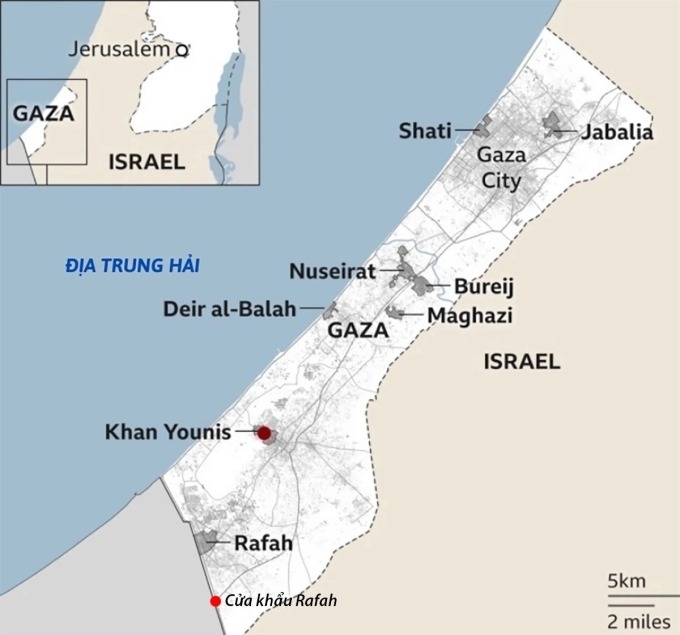 |
Location of Gaza City. Graphic: BBC |
Location of Gaza City. Graphic: BBC
Many choose to stay in Gaza City, haunted by past experiences. Jawaher Al-Najjar, 50, left Gaza City for an IDF-designated safe zone in Rafah, southern Gaza, in 10/2023, but her eldest son was killed during the journey.
"I promised myself I would never evacuate again, even if it meant losing my life," she said. "The Israeli army is asking Gaza City residents to leave. I will not. I don't want to go through that horror again".
Others have left Gaza City but soon regretted it. Raed Bakr, 45, and 10 family members recently headed south, believing that leaving early would give him a better chance of finding a suitable space to protect his children.
"I was forced to pitch a tent on the Khan Younis beach, but the rising tide flooded the entire tent area," Bakr recounted. "My children experienced siege and hunger when Israel launched its operation in Gaza over a year ago. This time, I wanted to protect them, but now I regret it. The cost of relocation is too high. And there is nowhere safe here".
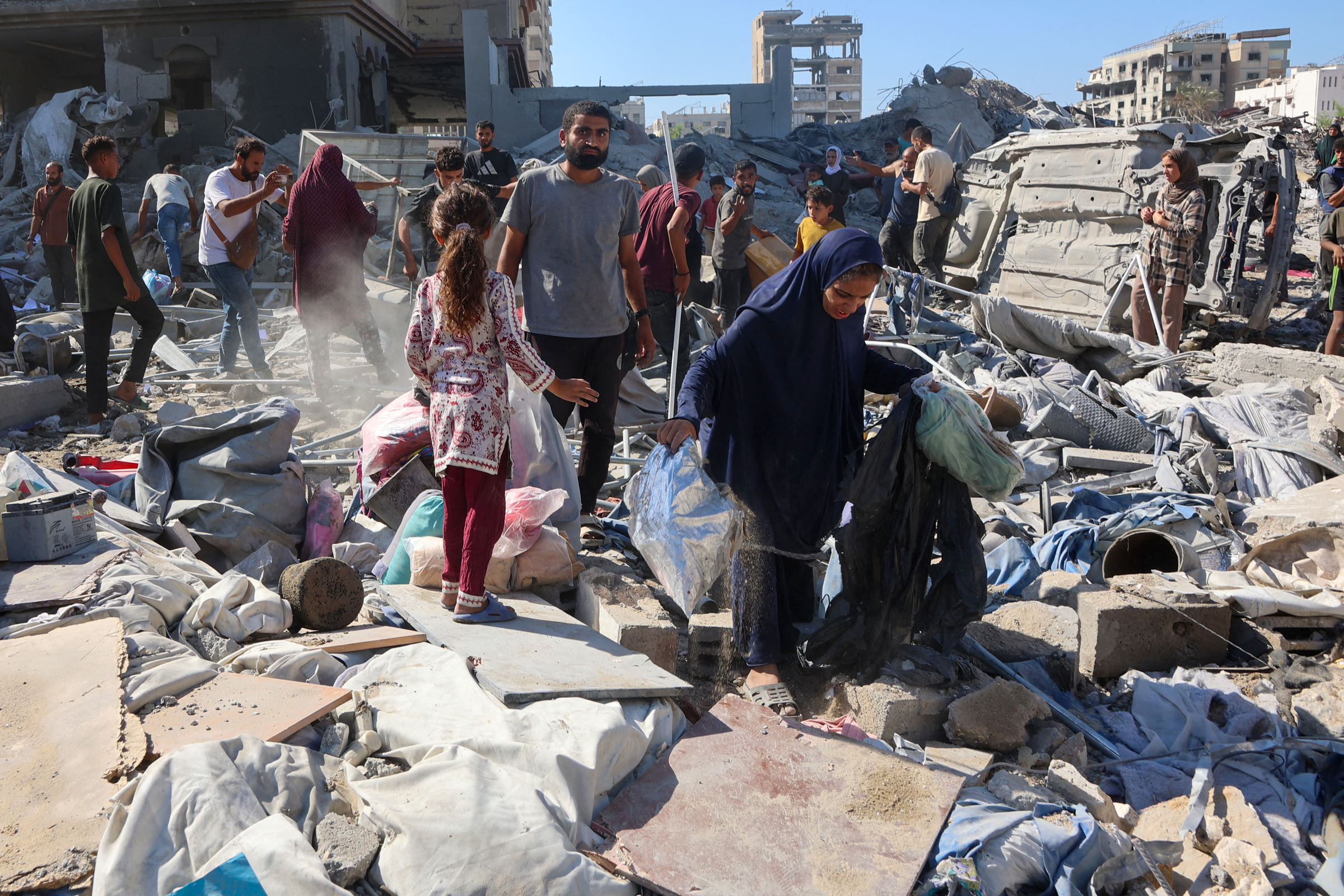 |
Palestinians inspect the rubble of the al-Ruya Tower in Gaza City after it was destroyed by the Israeli army on 8/9. Photo: AFP |
Palestinians inspect the rubble of the al-Ruya Tower in Gaza City after it was destroyed by the Israeli army on 8/9. Photo: AFP
The dangers of staying in Gaza City are also immense. The IDF is advancing from the outskirts and has taken control of about 40% of the area. Explosions and gunfire are almost constant, and Gaza's health authorities report more deaths daily. Video footage of the Mushtaha Tower's collapse shows rubble burying hundreds of tents nearby.
Arej Ahmed, 50, a Palestinian refugee living in a tent in southwest Gaza City, told AFP that her husband "saw Mushtaha Tower residents throwing their belongings from the upper floors to escape".
"Less than half an hour after the evacuation order, the tower was bombed," she said.
Whether such horrific events will force city residents to leave remains an open question.
"My biggest fear is that I will have to move again and again," Rabie said. "Will the place I choose become a target in the coming months? Will it be safe? Nobody knows".
Nhu Tam (According to AFP, Reuters, Telegraph)





